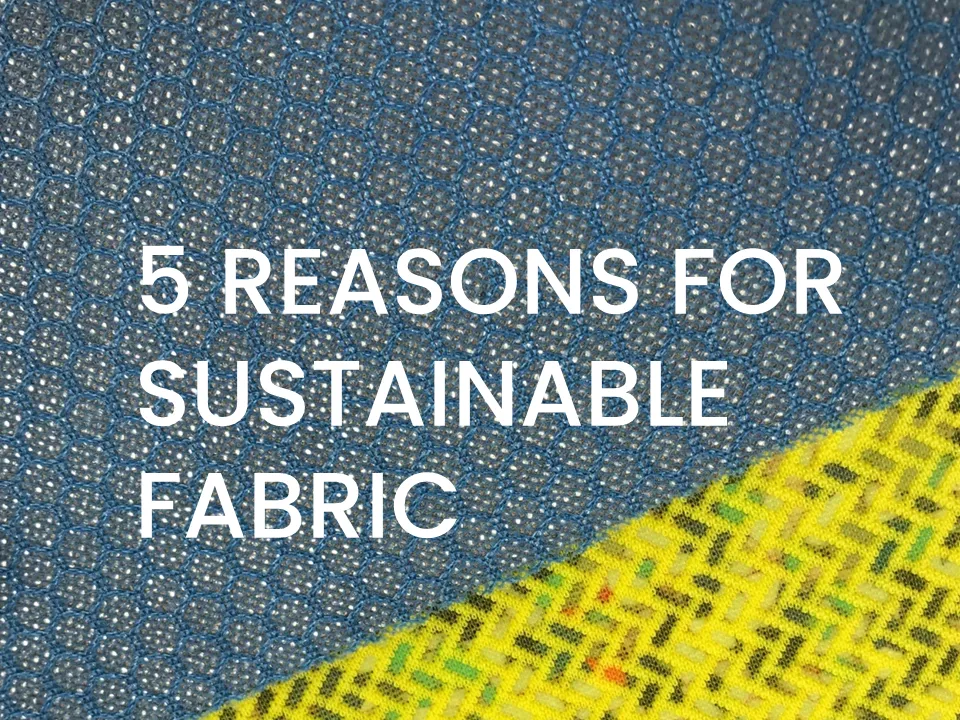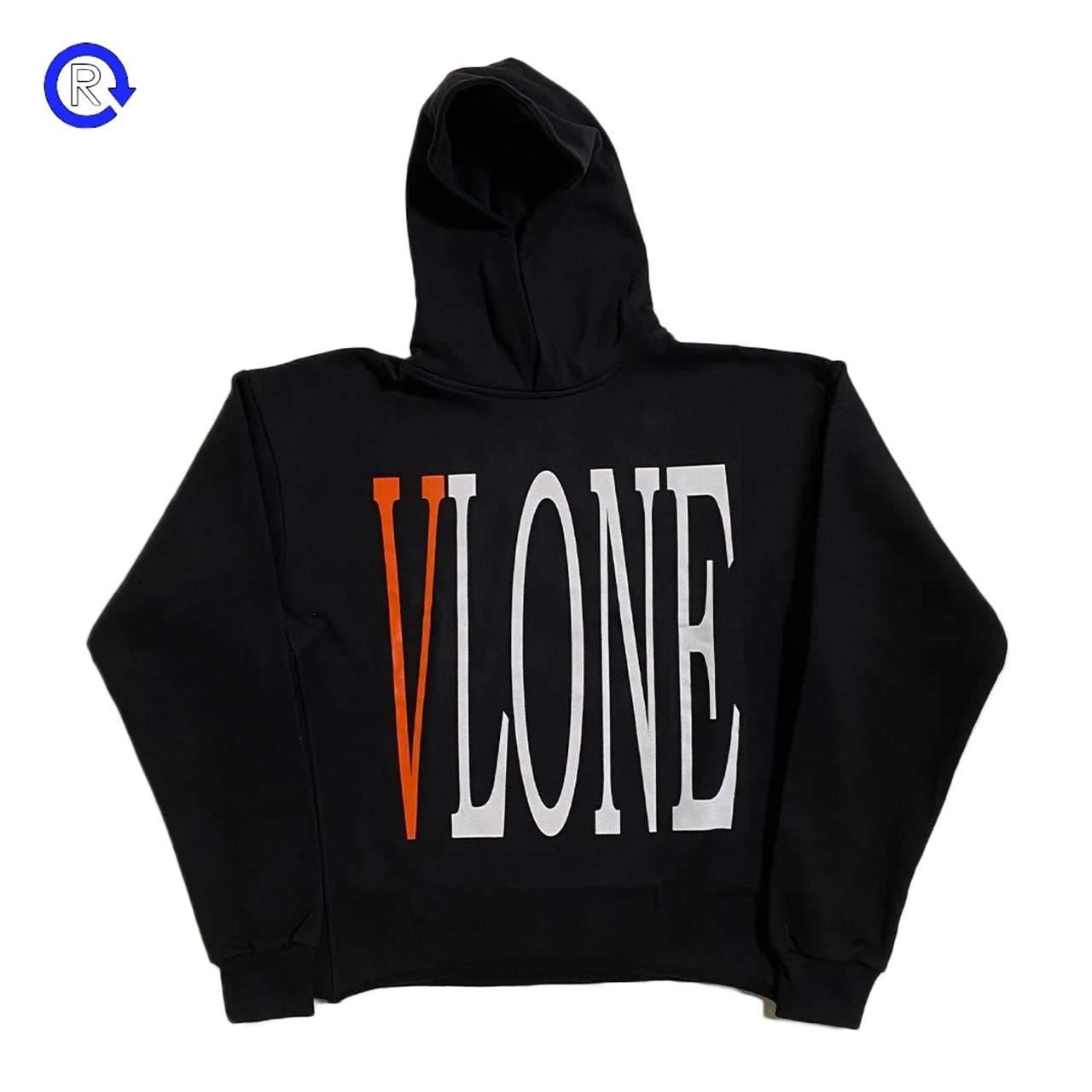Fashion
Benefits of Natural Sustainable Fabrics

Utilizing clothing made of sustainable, natural materials can have several advantages. For example, natural fabrics can be made from organic cotton, recycled polyester, and linen. You’ll also find that these fabrics are easier to care for.
Organic cotton
An excellent method to lessen your influence on the environment is to get your clothing produced from organic cotton sustainable textiles. Organic fabrics are long-lasting, biodegradable, and contain no harmful chemicals. The label will also tell you whether the garment was produced in a socially responsible manner.
Organic cotton is grown using natural methods. It uses less water than conventional cotton, and biological pest reduction techniques accompany the harvest. It is good news for the environment and people allergic to chemicals.
Organic cotton clothing is more durable. It’s softer and less likely to cause skin irritation. It also helps farmers save money. It also helps reduce exposure to allergens and environmental hazards.
While organic cotton is often more expensive, it is a good investment. It provides a stable income, helps farmers earn a fair wage, and helps protect the environment. It also helps reduce your carbon footprint.
The benefits of organic cotton sustainable fabrics may seem obvious, but it is essential to understand the details. For instance, organic cotton uses about 88% less water than conventional cotton. And if all of the world’s cotton were grown organically, pesticide use would be reduced by 98%.
Bamboo
Using natural sustainable fabrics from bamboo can improve your health and the environment. Bamboo is a fast-growing plant that needs very little water and pesticides. It has a unique ability to prevent soil erosion and is also pest resistant. It is also a very durable fabric. Bamboo is also known for its breathable properties and softness.
Numerous processes may be used to make bamboo cloth. Some businesses refer to their merchandise as bamboo cloth. Others carry on with the manufacturing process.
Bamboo fabric can be produced through a chemical process. The standard method involves using a chemical compound to extract cellulose from bamboo. The use of these chemicals poses a threat to the environment and workers. However, there are also mechanical methods of production. These methods are more environmentally friendly, but they are also more expensive.
A closed-loop approach may also be used to make bamboo cloth. It is the most eco-friendly production technique. Manufacturers soak their material in a natural enzyme solution in a closed-loop process. This method also results in minimal pollution.
Recycled polyester
Whether you’re an individual looking for a more eco-friendly choice or a company looking to minimize your environmental impact, recycled polyester can help. It’s a durable, breathable fabric that is easy to care for. Additionally, it may be used with natural fibers to minimize environmental impact.
Polyester is one of the most common materials used in the textile industry. It’s used in sportswear, loungewear, and outdoor clothing. It can also be blended with other fabrics to create a new look.
The main benefit of recycled polyester is that it reduces greenhouse gas emissions. In addition, it helps protect marine ecosystems. It also encourages consumers to be more aware of recycling and reduces dependency on fossil fuels.
The production of garments has a significant influence on the environment. The growing of cotton requires a lot of water. In addition, polyester manufacturing involves a lot of energy. Many garments are made from something other than polyester to avoid this problem. Often, they are blended with cotton or other materials.
Polyester is best used in garments that perform well technically to be genuinely sustainable. While recycled polyester is more environmentally friendly than virgin polyester, it is not a perfect solution. It is still less energy efficient than most natural materials.
Hemp
Whether you are a designer or a consumer, sustainable hemp fabrics are a great choice. They are environmentally friendly, lightweight, durable, and hypoallergenic. They are also machine washable, making them great for various clothing applications.
Hemp fiber is also used to make paper, canvas, and ropes. The production process is also minimally impactful on the environment. It requires less water and soil nutrients than other crops and can be planted in almost any soil.
Hemp clothing also lasts longer than other natural materials. It wicks moisture away from the body, is hypoallergenic, and is breathable. Additionally, it is moth and rot-resistant. A maximum of 20% of its weight can be absorbed. Additionally, it can withstand ultraviolet light.
Hemp fabric is an excellent choice for sensitive skin. It has a rougher feel than cotton and a soft, natural texture. It can be machine-washed and dry-cleaned.
Hemp is also considered a more sustainable fabric than cotton. It uses less water and fossil fuels than cotton, which is why it is popular in eco-friendly clothing.
Linen
Using natural and sustainable fabrics can positively impact the environment and your health. They are also more stylish. They are biodegradable, breathable, and lightweight. In addition to responding to heat, natural materials are naturally mold-resistant.
There are a variety of fabrics, including linen, hemp, and silk. Linen is a breathable, durable, lightweight fabric made from flax plant fibers. It also requires fewer resources to produce than cotton.
There are also plant-based fabrics, such as rayon and bamboo. These fabrics absorb four times their weight in water, making them feel incredibly soft.
Wool is a durable animal-based fiber known for its warmth and comfort. It’s also one of the most environmentally-friendly fabrics.
Natural fabric alternatives, such as hemp, also benefit the environment. Hemp plants require minimal water to grow and don’t require pesticides or fertilizer. To save water, kapok tree fibers can be blended with organic cotton during harvest.
Many fashion designers are incorporating natural fabrics into their collections. However, the best way to tell if a brand’s materials are sustainable is to look at its production processes.
read more about… how-duana-melo-made-it-big-in-the-world-of-fashion/
Fashion
Revolutionise Your Wardrobe: Why Plunge Bras Are A Must-Have?

In the world of fashion, undergarments frequently have a big impact on how an outfit looks and feels overall. Among the many types of lingerie available, one particular style stands out for its versatility, comfort, and ability to transform a woman’s silhouette: the plunge bra. Plunge bras are an excellent addition to any attire, whether you’re enhancing your everyday ensemble or preparing for a formal occasion. Let’s delve into why plunge bras are indeed a must-have item for every modern woman.
1. Flattering Silhouette
One of the most compelling reasons to embrace plunge bras is their ability to create a flattering silhouette. Unlike traditional bras, which may feature higher-cut cups that can peek out from low-cut tops or dresses, plunge bras are designed with a deep neckline that plunges dramatically between the breasts. This design offers a more natural and alluring shape, enhancing cleavage and providing a more streamlined look under clothing. Under a fitted top or a plunging neckline, a plunge bra creates a sleek, attractive silhouette that gives you the confidence and poise you need to look good in any outfit.
2. Versatility
Another key benefit of plunge bras is their versatility. These bras go well with many different clothes and events because they come in a range of styles, from simple t-shirt bras to lingerie decorated with lace. Whether you’re dressing for work, a casual outing, or a formal event, there’s a plunge bra to suit your needs. Additionally, plunge bras come in different colours and materials, allowing you to coordinate them seamlessly with your wardrobe. With their ability to adapt to various outfits and occasions, plunge bras are an indispensable addition to any woman’s lingerie collection.
3. Comfort And Support
While plunge bras are celebrated for their aesthetic appeal, they also excel in terms of comfort and support. Many plunge bras feature underwire and moulded cups that provide excellent support and lift, ensuring that you feel secure and comfortable throughout the day. Moreover, the plunging neckline of these bras often means that they have narrower centre panels, which can be more comfortable for women with narrower chests or those who find traditional bras too restrictive. By combining style with comfort, plunge bras offer the best of both worlds, allowing you to look and feel your best with ease.
4. Confidence Boost
Perhaps the most significant reason why plunge bras are a must-have item is the confidence boost they provide. A well-fitting plunge bra not only enhances your figure but also boosts your self-assurance, allowing you to feel empowered and beautiful from the inside out. Whether you’re rocking a plunging neckline or simply enjoying the subtle lift and support of a plunge bra under everyday clothing, knowing that you’re wearing lingerie that flatters your figure can make a world of difference in how you carry yourself. With the right plunge bra, you can exude confidence and radiate poise, making every outfit shine.
5. Embracing Your Femininity
Finally, plunge bras encourage women to embrace their femininity and celebrate their curves. By accentuating cleavage and enhancing natural curves, these bras celebrate the beauty of the female form, helping women feel more comfortable and confident in their own skin. Whether you’re petite or plus-size, young or mature, a plunge bra can enhance your natural assets and make you feel fabulous. Embracing plunge bras is not just about looking good; it’s about feeling good and embracing your femininity with pride.
In conclusion, plunge bras are more than just lingerie; they’re a wardrobe essential that can revolutionise your style and boost your confidence. With their flattering silhouette, versatility, comfort, and ability to enhance femininity, plunge bras offer a multitude of benefits for women of all shapes and sizes. Whether you’re dressing for a special occasion or simply want to elevate your everyday look, investing in a few quality plunge bras is sure to be a game-changer. So go ahead, revolutionise your wardrobe, and discover the transformative power of plunge bras today.
Fashion
10 Tips That Will Make You Influential In Fashion

Fashion has always been a powerful tool for self-expression and creativity. It allows individuals to showcase their unique style and personality. But in today’s fast-paced and ever-changing world, being influential in the fashion industry is not an easy feat. With so many trends, brands, and styles to choose from, it can be overwhelming to stand out and make a mark in the fashion world.
However, with the right tips and mindset, anyone can become influential in the fashion industry. Whether you’re a fashion enthusiast, blogger, or aspiring designer, here are 10 tips that will help you become an influential figure in the world of fashion.
Want to Be a Fashion Influencer? Here Are 10 Tips You Need!
1. Find Your Unique Style
The first step to being influential in fashion is to find your unique style. With so many trends and styles, it’s easy to get lost in the crowd. But what sets you apart from the rest is your personal style. Many of theLondon escorts has their own style and thats what makes them stand out. Take the time to experiment with different looks and find what makes you feel confident and comfortable. Whether it’s a bold and edgy look or a classic and elegant style, embrace it and make it your own.
2. Stay Updated on Industry News
In the fast-paced fashion industry, it’s crucial to stay updated on the latest news and trends. Follow fashion magazines, bloggers, and influencers to stay in the loop. Attend fashion shows, events, and exhibitions to get a firsthand experience of what’s happening in the industry. This will not only keep you informed but also give you insights into what’s popular and what’s not.
3. Network and Collaborate
Networking is key in any industry, and fashion is no exception. Attend fashion events, connect with people in the industry, and collaborate with other fashion enthusiasts. This will not only help you build relationships but also increase your visibility in the fashion world. Collaborating with other fashion bloggers or designers can also bring fresh perspectives and ideas to your work.
4. Be Authentic
In a world where everyone is trying to fit in, authenticity is a breath of fresh air. Don’t be afraid to be yourself and showcase your personal style like Liverpool prepaid girls. People are drawn to authenticity, and it will help you stand out from the crowd. Whether it’s through your fashion choices or your content, always stay true to yourself.
5. Utilize Social Media
In today’s digital age, social media is a powerful tool for anyone looking to make a mark in the fashion industry. Create a strong social media presence by sharing your unique style, engaging with your followers, and collaborating with other influencers. Use relevant hashtags to increase your reach and connect with brands and designers who align with your style.

6. Be Consistent
Consistency is key in building a strong brand and online presence. Whether it’s your fashion content or social media posts, make sure to be consistent with your style and message. This will help your followers and potential collaborators to recognize and remember you. Consistency also shows dedication and professionalism, which are important qualities in the fashion industry.
7. Know Your Audience
Knowing your audience is crucial in any field, and fashion is no different. Understand who your target audience is, what they like, and what they’re looking for. This will help you create content and style choices that will resonate with them. Engage with your audience and ask for their feedback, as it will help you improve and cater to their needs.
8. Embrace Sustainability
Sustainability is becoming increasingly important in the fashion industry. As an influential figure, it’s essential to embrace sustainable fashion practices and promote them to your audience. This can include buying from ethical and eco-friendly brands, upcycling old clothes, and promoting a more conscious approach to fashion. By incorporating sustainability into your fashion choices, you not only make a positive impact on the environment but also inspire others to do the same.
9. Stay Positive and Confident
Fashion can be competitive and challenging, but it’s important to stay positive and confident in yourself and your work. Don’t let rejections or setbacks discourage you. Instead, use them as motivation to keep pushing forward. Mumbai call girls are more confidence, who is attractive and will help you stand out in the industry.
10. Be Passionate
Last but not least, be passionate about fashion. Fashion is not just about clothes, but it’s also about creativity, self-expression, and art. Embrace your passion for fashion and let it shine through in your work. This will not only make your work more authentic and relatable, but it will also inspire others to pursue their passions.
Becoming influential in the fashion industry takes time and effort, but by following these tips, you can establish yourself as a fashion influencer. Remember to stay true to yourself, be consistent, and keep pushing forward. With these qualities and a passion for fashion, you can make a mark in the industry and inspire others to do the same.
Fashion
Unveiling the Trend Vlone Hoodie for Fashion

Fashion is an ever-evolving realm where trends emerge and fade, but some styles stand the test of time, capturing the essence of individuality and expression. One such iconic piece making waves in contemporary fashion is the Vlone hoodie. With its distinctive design and cultural significance, the Vlone hoodie has transcended mere clothing to become a symbol of urban fashion and streetwear culture.
The Rise of Vlone A Brief History
Vlone, a streetwear brand founded by A$AP Bari in 2011, has become synonymous with avant-garde style and urban authenticity. Inspired by the streets of Harlem, Vlone channels the raw energy and vibrancy of urban culture into its designs, creating apparel that resonates with the youth and fashion enthusiasts worldwide.
Decoding the Vlone Hoodie
At the heart of Vlone’s allure lies its iconic hoodie. Crafted with meticulous attention to detail and quality, the Vlone hoodie embodies the ethos of individualism and self-expression. Made from premium fabrics and featuring bold graphics and distinctive branding, each Vlone hoodie is a statement piece that exudes confidence and attitude.
The Essence of Vlone Sweatshirts
Crafted with meticulous attention to detail and imbued with the spirit of street culture, Vlone sweatshirts encapsulate the essence of urban fashion. Each sweatshirt is a canvas of creativity, featuring bold graphics, intricate designs, and the unmistakable Vlone logo, which serves as a symbol of authenticity and individuality.
A Legacy of Innovation
Founded by A$AP Bari in 2011, Vlone emerged from the vibrant streets of Harlem, infusing its designs with the raw energy and cultural influences of its surroundings. From its inception, Vlone has challenged conventional fashion norms, redefining streetwear with its daring designs and unapologetic attitude.
The Vlone Aesthetic
What sets Vlone sweatshirts apart is their distinctive aesthetic, which seamlessly blends elements of street style with high-fashion sensibilities. From oversized silhouettes and bold color palettes to intricate embroidery and unconventional graphics, each Vlone sweatshirt is a testament to the brand’s commitment to innovation and individualism.
Embracing Urban Culture
At its core, Vlone sweatshirts are more than just garments; they are symbols of urban culture and self-expression. Embraced by fashion enthusiasts, musicians, and trendsetters alike, Vlone sweatshirts have become emblematic of a lifestyle rooted in authenticity, creativity, and rebellion against the status quo.
The Signature Aesthetic
What sets the Vlone hoodie apart is its unmistakable aesthetic. Characterised by minimalist designs and striking logos, Vlone hoodies command attention while maintaining an understated allure. From classic black hoodies adorned with the iconic Vlone logo to vibrant iterations featuring eye-catching graphics, the versatility of Vlone hoodies knows no bounds.
Embracing Streetwear Culture
Central to the appeal of Vlone hoodies is their deep-rooted connection to streetwear culture. Embraced by fashion icons, musicians, and influencers alike, Vlone hoodies have become emblematic of urban style and authenticity. Whether paired with distressed denim and sneakers for a casual look or layered with statement pieces for a high-fashion ensemble, Vlone hoodies effortlessly blur the lines between streetwear and haute couture.
The Vlone Phenomenon A Global Movement
Beyond its status as a fashion statement, the Vlone hoodie represents a cultural phenomenon that transcends geographical boundaries. From the bustling streets of New York City to the fashion capitals of Paris and Tokyo, Vlone hoodies have cemented their place in the global fashion landscape, inspiring legions of devoted followers and sparking trends that reverberate across continents.
Styling Tips Elevating Your Look with Vlone Hoodies
Casual Cool
For an effortless yet impactful look, pair your Vlone hoodie with distressed jeans and chunky sneakers. Opt for neutral hues for a laid-back vibe or make a bold statement with vibrant colors and graphic prints.
Street Style Chic
Elevate your street style game by layering your Vlone hoodie under a leather jacket or oversized coat. Complete the look with tailored trousers and statement accessories for a fashion-forward ensemble that commands attention.
High-Fashion Fusion
Blend streetwear elements with high-fashion pieces by incorporating your Vlone hoodie into tailored ensembles. Pair it with tailored trousers, structured blazers, and sleek accessories for a modern twist on classic sophistication.
Conclusion
In the ever-evolving landscape of fashion, the Vlone hoodie stands as a beacon of individuality and authenticity. With its distinctive design, cultural significance, and global appeal, the Vlone hoodie transcends mere clothing to become a symbol of self-expression and urban style. Embrace the Vlone phenomenon and elevate your wardrobe with this iconic piece that celebrates the spirit of streetwear culture.
-

 Travel2 years ago
Travel2 years agoNEW ZEALAND VISA FOR ISRAELI AND NORWEGIAN CITIZENS
-

 Uncategorized2 years ago
Uncategorized2 years agoAMERICAN VISA FOR NORWEGIAN AND JAPANESE CITIZENS
-

 Health2 years ago
Health2 years agoHealth Benefits Of Watermelon
-

 Lifestyle1 year ago
Lifestyle1 year agoThese Easy, Affordable Improvements Can Completely Transform Your Home
-

 Technology1 month ago
Technology1 month agoImagine a World Transformed by Technology and Innovation of 2023-1954
-

 Lifestyle2 months ago
Lifestyle2 months agoThe Role of Door-to-Door Apps in Voter Engagement
-
Home Improvement9 months ago
11 Amazing Insights into Home Decor Gifts – Elevate Your Gifting Game
-

 Business2 months ago
Business2 months agoMetaphysical Stores Near Me




